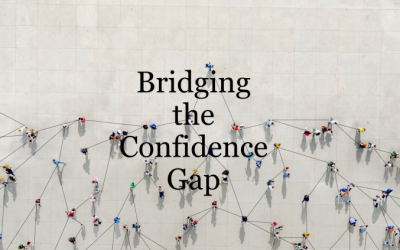Can Snow-Clearing Be Sexist?
Introduction: The unexpected question
At first glance, snow-clearing seems like a neutral activity, free from biases. However, in 2011, a remark by a municipal official in Karlskoga, Sweden, raised an intriguing question: can snow-clearing be sexist? This question led to a re-evaluation of existing snow-clearing plans and uncovered surprising results. This article delves into the unexpected ways gender biases can influence urban planning and provides practical solutions for more equitable approaches.
The problem: unequal travel patterns of men and women
Gendered travel behaviors
In most cities, snow-clearing begins with major roads and then moves on to sidewalks and bike paths. While this approach seems logical, it overlooks the fact that men and women have different travel patterns. Men are more likely to drive cars, while women are more likely to walk or use public transportation. Studies have shown that men typically have more straightforward commutes, traveling directly from home to work and back.
The impact on women
Data shows that women often engage in ‘trip-chaining,’ which involves combining multiple short trips, such as taking children to school, running errands, and caring for elderly relatives. This means that women are disproportionately affected when sidewalks and bike paths are cleared last. Their increased exposure to hazardous conditions like icy sidewalks can lead to higher rates of injury and inconvenience.
The Karlskoga example: a practical approach
Initial observations and changes
When Karlskoga decided to revise their snow-clearing plan and prioritize clearing sidewalks and bike paths first, the results were impressive. This change not only led to fewer accidents but also significant cost savings. The initial observation was that traditional snow-clearing plans favored the commuting patterns of men over women, leading to the proposed changes.
The impact of changes
Research in northern Sweden indicated that pedestrians were three times more likely to be injured in slippery conditions than motorists, and these injuries predominantly affected women. By changing the snow-clearing order, Karlskoga drastically reduced the incidence of these injuries. The city saw a reduction in healthcare costs associated with slip-and-fall injuries, illustrating the practical benefits of gender-conscious planning.
Economic and social benefits
Financial savings
Reordering the snow-clearing priorities brought unexpected benefits. The costs associated with injuries from slipping on ice were significantly higher than the costs of snow removal. By prioritizing the clearing of sidewalks and bike paths, the municipality saved on healthcare costs and improved the safety and well-being of its residents.
Enhanced quality of life
Beyond financial savings, the changes led to an improved quality of life for residents. Women, in particular, reported feeling safer and more confident navigating the city during winter months. This boost in safety and confidence can lead to increased participation in public life and economic activities.
A broader application: the example of Vienna
Data-driven urban planning
The concept of gender-neutral urban management is not limited to snow-clearing. In Vienna, for instance, data on pedestrian movements is collected to make the city more pedestrian-friendly. Improvements include enhanced lighting, wider sidewalks, and better access for strollers and wheelchairs. This demonstrates that gender-conscious policies can contribute to a more inclusive and safer urban environment.
Successful outcomes
Vienna’s approach has led to measurable improvements in safety and accessibility. For example, pedestrian zones have become more navigable for parents with strollers and people with disabilities. These changes not only benefit women but also other vulnerable groups, promoting a more inclusive urban environment.
The importance of gender-conscious policies
Recognizing diverse needs
Gender-conscious policies take into account the different needs and patterns of men and women. It’s not about disadvantaging men but about achieving a fairer distribution of resources and services. By considering the experiences and needs of women in policy decisions, municipalities can create a more inclusive society.
Policy implementation
Implementing such policies requires a commitment to collecting and analyzing data that reflects the experiences of all city residents. This can involve surveys, focus groups, and direct observations. Municipalities must be willing to adapt their policies based on these findings to ensure they are meeting the needs of their entire population.
Broader implications and other examples
Public transportation
Beyond snow-clearing, gender-conscious urban planning can be applied to various aspects of city life. For example, public transportation schedules can be adjusted to accommodate the peak travel times of women who may be balancing work, childcare, and other responsibilities. Safety measures, such as better lighting at bus stops and train stations, can also be prioritized.
Urban design
Park designs and public restroom placements can all benefit from a gendered perspective. Cities that have implemented such policies have seen improvements in safety, accessibility, and overall quality of life for all residents. For instance, more seating areas and well-lit paths in parks can make these spaces more welcoming for everyone, including women and families.
Recommendations for municipalities
Data collection and analysis
Municipalities should start by collecting sex-disaggregated data to better understand the needs of all their residents. This data is crucial for identifying and addressing gender disparities in urban planning.
Inclusive decision-making
Additionally, involving women in decision-making processes should be a priority. This includes ensuring women’s voices are heard in city councils, planning committees, and other decision-making bodies. Women’s perspectives can provide invaluable insights that lead to more inclusive and effective policies.
Learning from successful examples
Learning from successful examples like Karlskoga and Vienna can help municipalities work more effectively towards creating an inclusive and safe living environment for everyone. By studying these models, other cities can adopt best practices and tailor them to their unique contexts.
Conclusion: snow-clearing as a case study
The example of Karlskoga shows how seemingly neutral activities, such as snow-clearing, can create significant inequalities if gender is not considered. Adjusting such plans can lead to better outcomes for everyone. This underscores the need for gender-conscious policies in all aspects of urban management and planning. By adopting these approaches, we can ensure that our cities are designed to meet the needs of all residents, promoting fairness and inclusivity in every facet of urban life.
Latest Articles
The Confidence Gap Explained: Why It Exists and How We Can Bridge It
The Confidence Gap Explained: Why It Exists and How We Can Bridge ItThe “confidence gap” is a term that describes the difference in self-assurance between men and women, particularly in professional settings. While both men and women experience self-doubt, studies...
The Reykjavík Index for Leadership 2024: We’re Failing Women in Leadership, and It’s Time for a Systemic Overhaul
The Reykjavík Index for Leadership 2024: We’re Failing Women in Leadership, and It’s Time for a Systemic OverhaulThe Reykjavík Index for Leadership 2024 reveals a sobering truth: our progress toward gender equality in leadership is not just stalling; it’s reversing....


